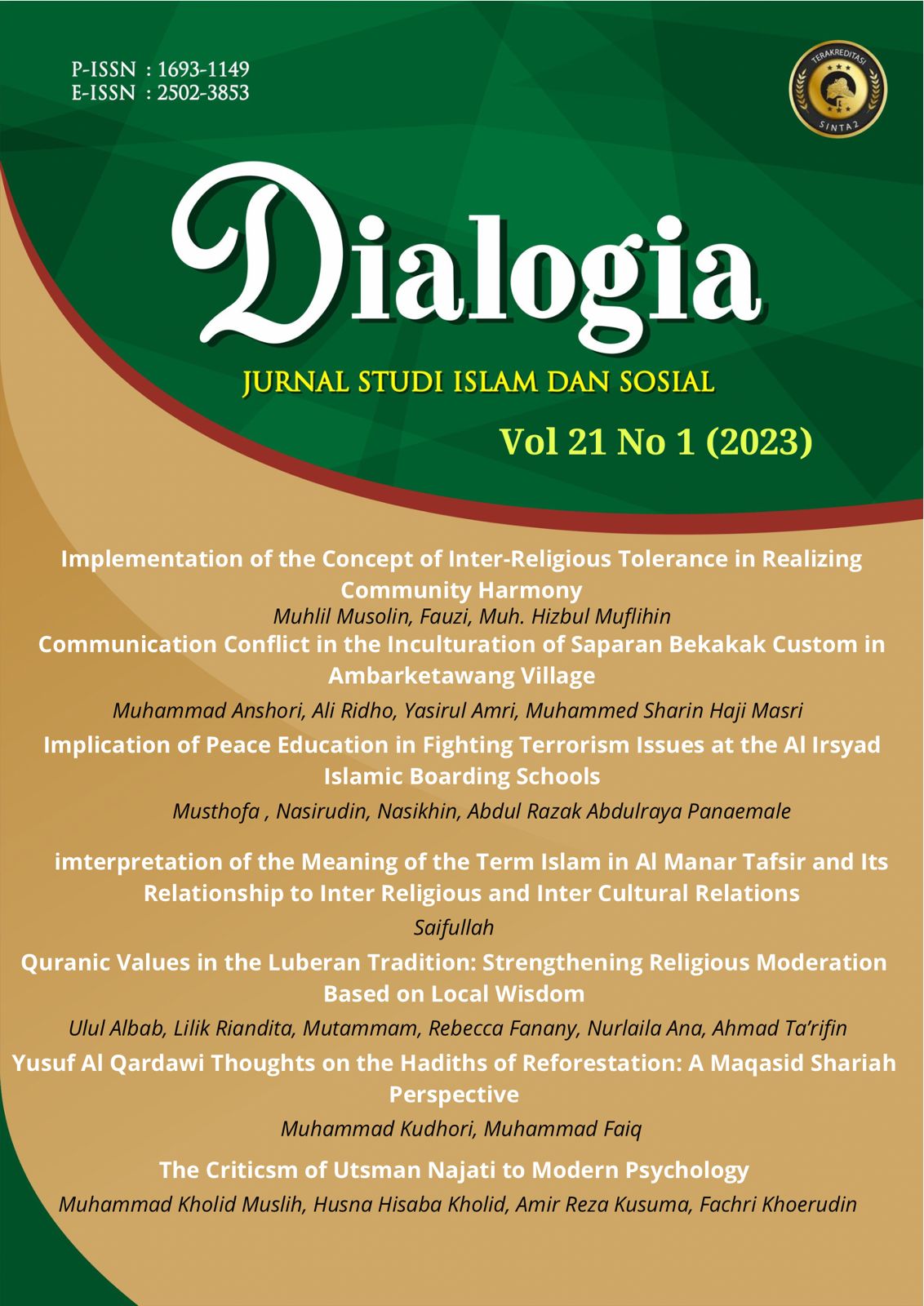Implementation of the Concept of Inter-Religious Tolerance in Realizing Community Harmony
DOI:
https://doi.org/10.21154/dialogia.v21i1.5707Keywords:
Implementation, Tolerance, Harmony, ReligionAbstract
The Central Java regional government designated Rendeng Village as a harmony-conscious village because it succeeded in maintaining religious harmony. This study aims to determine the form of Implementation of inter-religious tolerance in realizing community harmony. This qualitative research method uses case studies””the place of research in Rendeng Village, Gebang District, Purworejo Regency, Central Java. The results showed that the form of Implementation of the concept of tolerance in Rendeng village was through various fields, including in the field of belief, namely by accepting differences in beliefs and the social field, maintaining mutual brotherhood and harmony by prioritizing solidarity between brotherhood and neighbors. In the political field, with the principle that all villagers have equal political rights and opportunities with consideration of professionalism and integrity, the role of the Rendeng village government by emphasizing the importance of unity, integrity, and harmony, involving all villagers in village activities and serving the needs of villagers regardless of religion and belief, the role of religious leaders and community leaders is by providing an understanding of the plurality of life in Rendeng Village as well as providing advice and motivation for mutual respect, cooperation and deliberation among fellow community members.







